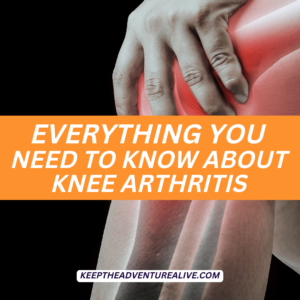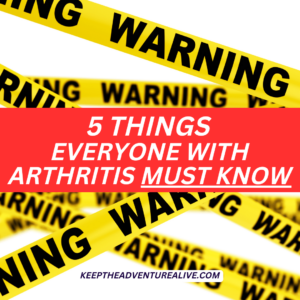Knee Osteoarthritis is a form of inflammatory arthritis, not wear and tear. There are so many misconceptions out there. The goals of this article are to make it simple for you but to also bring you hope. The hardest part about a knee osteoarthritis diagnosis is not knowing where to go next and constantly worrying about if what you are doing is the right thing for pain relief. You will be able to answer: what is knee osteoarthritis, where do I start after a knee osteoarthritis diagnosis, and how do I best help my knee joints!
“Per the x-ray we just did, it appears you have knee osteoarthritis.”
“The next thing you need to do is lose weight and start exercising but you won’t ever really be able to stop the progression.”
“I’ll see you back in 6 months.”
Does this sound familiar?!
I hope it doesn’t, but unfortunately, this is what many people have to go through when getting a diagnosis of knee osteoarthritis.
You go see your family doctor, rheumatologist, or other physician for your knee pain that has been gradually getting worse. Most often they will take an x-ray or even an MRI to rule out any major injuries or reasons for pain.
They find some arthritic changes in your joint, loss of cartilage and loss of space in the joint itself which you’re told explains your pain. Osteoarthritis.
It can be both scary and overwhelming to hear that word. I’m sure you’ve heard or seen others struggling with this disease and it can be hard to imagine that now it is happening to you.
The main mission of this ultimate guide is to give you hope. I want to answer your questions, give you the real information you need to know and show you that your life isn’t over because you have knee osteoarthritis.
I have helped thousands of people with knee osteoarthritis regain their active lives. Not only can your knees feel better but you have the potential to unlock the ability to enjoy adventures again.
With knee osteoarthritis, so much is possible. It does not have to be a death sentence to everything you love doing. Your body is resilient. Learning to move in the right ways, building up your muscles and increasing your balance can be some of the best ways to support arthritic knees.
If you want a fast track to success with knee osteoarthritis, Adventurers for Life, my arthritis workout membership is the next step. You’ll learn how to build strength in the right areas, improve balance and mobility without making your knees angry. Take it from these members below:
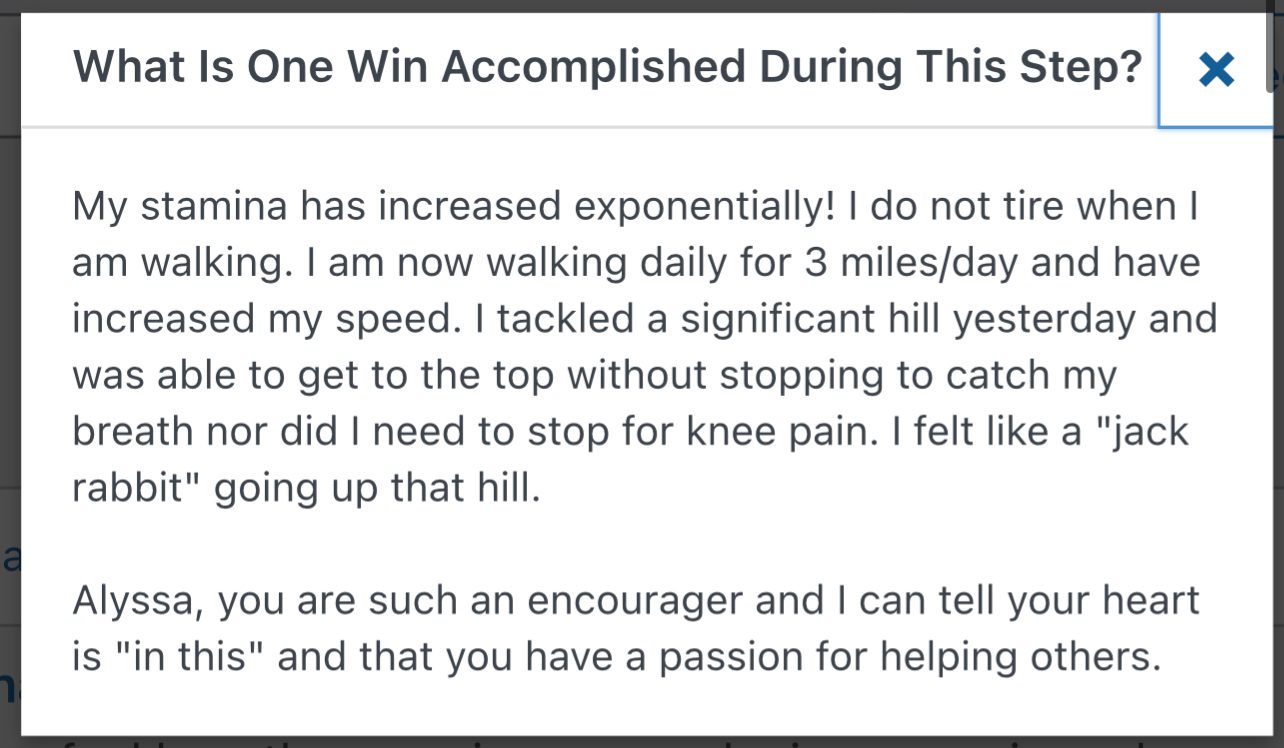
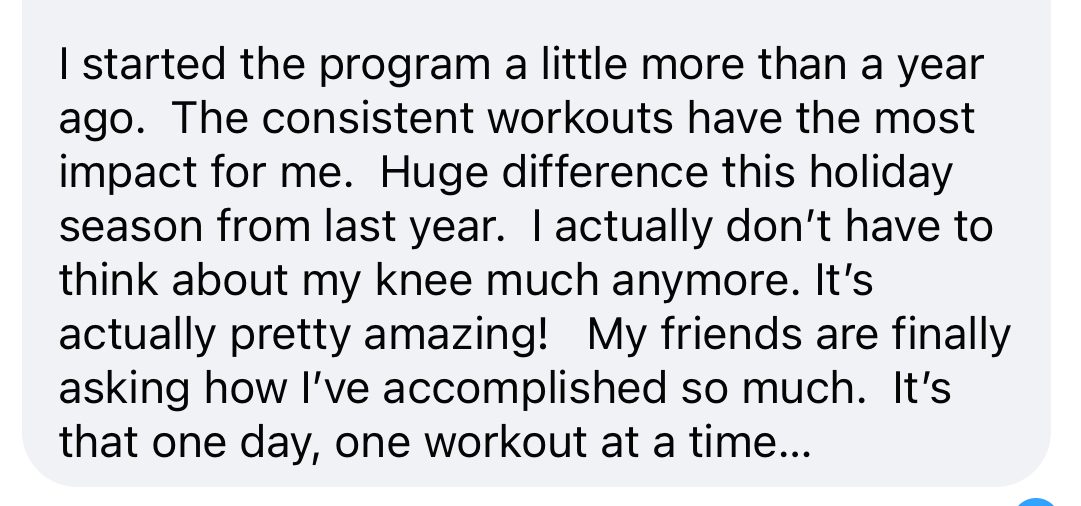

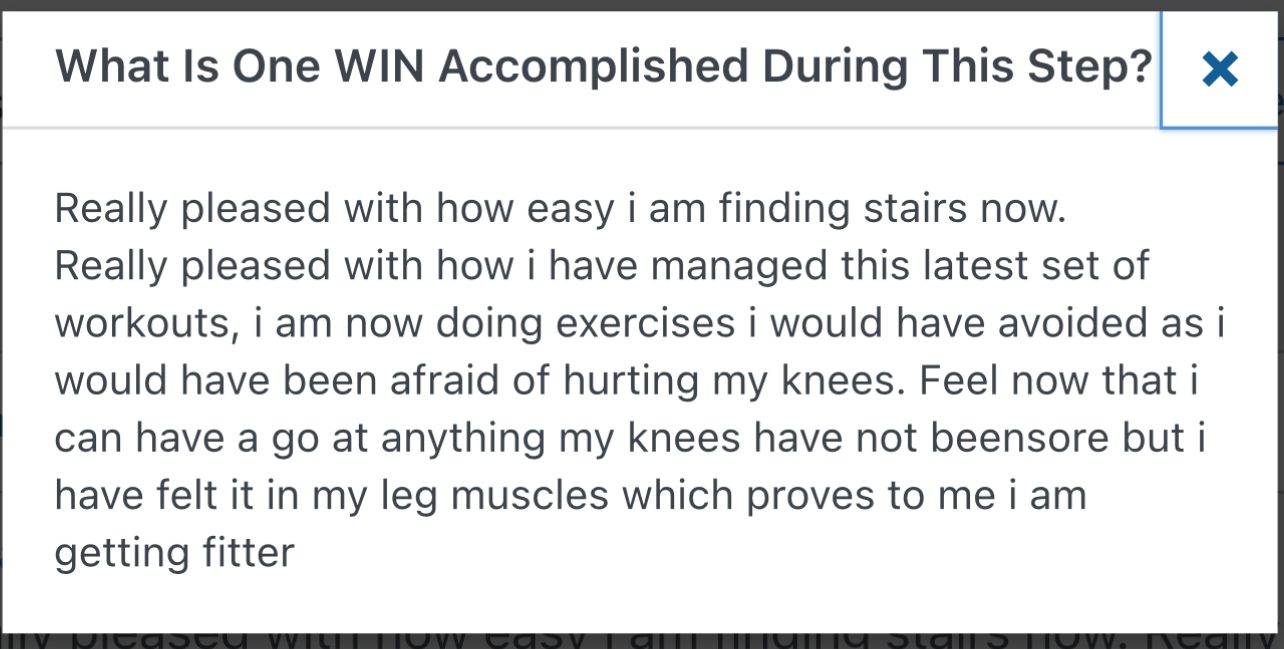
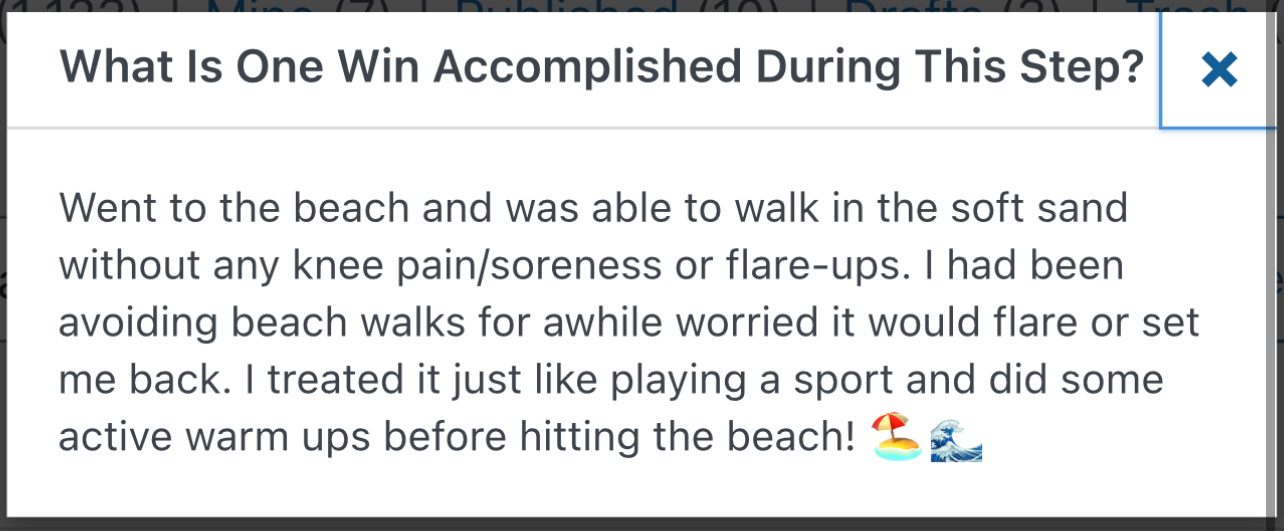
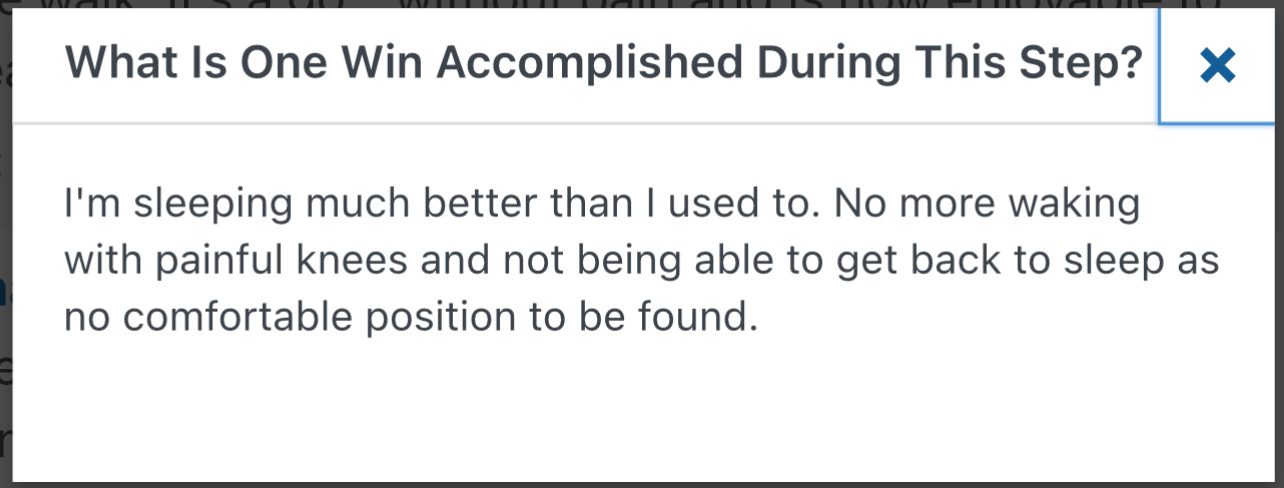
The keys to success with knee arthritis
Table of Contents
You will learn important steps you need to take in order to manage pain, prevent your knees from getting worse, and how to continue to lead an active life. Not only is it important to learn what these steps are but it is also important to implement them as well. Without action, your pain likely will continue to get worse and it could be a fast track to surgery.
Make sure you save this post for later and share with your friends when you’re done reading because I promise you, this is your Ultimate Guide to Knee Osteoarthritis.
1. What is Knee Osteoarthritis?
When you first search “knee osteoarthritis” online, you may see statements or phrases such as:
- cartilage damage
- wear and tear
- bone on bone
- degenerative joint disease
These phrases may also be mentioned to you by others, specially family, friends or even medical professionals.
The PROBLEM with this is words can be some of the most influential factors of a diagnosis of osteoarthritis. These words above make the diagnosis seem very scary.
So let’s break down why osteoarthritis happens, which can help make treatment options make more sense.
Knee osteoarthritis is so much more than wear and tear…and this is a positive thing.
The truth is, knee osteoarthritis is primarily driven by inflammation and emerging research is starting to uncover more and more on the condition.
"The past decade has seen a gradual but fundamental shift in our understanding of the mechanisms underlying OA. We no longer view [osteoarthritis] as a prototypical degenerative disease resulting from normal bodily wear and tear, but rather as a multifactorial disorder in which low-grade, chronic inflammation has a central role"
Robinson et al. 2016
This is actually good news and I’ll explain why.
If osteoarthritis was a degenerative condition caused simply by “wear and tear” you would have no hope for pain relief and everyone that had knee osteoarthritis would end up needing surgery. Also, movement would continue to make the condition worse which is the opposite of what exactly is true.
Knee osteoarthritis is caused by many different factors that can allow inflammation to become out of control. These factors, then contribute to the further irritation of your knee joints.
There is a strong genetic component as well but if you are aware of what continues to irritate the joint, you can live with a tolerable level of knee arthritis and prevent it from getting worse. Even though many of us have a family history of the inherent susceptibility to more inflammatory cells, this also means your knee joint is “bad”. Instead, it is just, quite frankly, angry and we can use specific tactics to decrease the amplification of the anger!
Since osteoarthritis has a strong inflammatory background, if you can control the inflammation- you likely can control both the pain and the progression.
2. Where Do I Need to Start if I Have Been Diagnosed with Knee osteoarthritis?
From the previous section, you know that if you can control inflammation, you can lessen the irritation and your symptoms.
In the video above, you will find some ideas to get you started on the path to reducing inflammation in your body. The FIRST step is understanding how you can most easily reduce inflammation from your life.
There are a few ways that are going to help decrease inflammation more significantly than others, so these should become your priorities. It is important to note that each person’s priorities are going to be different depending on how they live their lives. You essentially need to look at three categories and think about which one has the most room for improvement in your own life.
- Food: what you are eating, how much you are eating, and are you getting enough nutrients?
- Movement: what are you doing for exercise, how often, and how motivated you are when doing it.
- Emotion: are you constantly stressed, tired, frustrated, overworked, anxious or overwhelmed? Do you believe nothing can be done about your pain?
Each of these things can impact your levels of inflammation in your body.
If you find yourself eating out quite frequently, frequently binge on processed foods, or are not eating enough- these are all scenarios in which food should be a priority. Check out the best anti-inflammatory foods to get started with here.
If you find yourself avoiding exercise, getting <10 minutes per day of exercise, or if your only exercise is a monostructural movement such as walking, cycling, or running- exercise should be considered a priority. Learn more about how exercise can work wonders for osteoarthritis here.
If you find yourself constantly displaying the emotions above or if you are constantly living life on edge, your emotions could be increasing your inflammation levels.
This is one people commonly do not think about. Let’s look a little deeper into how emotions impact inflammation from Stacey Colino, an award winning writer, specializing in health and psychology:
"Emotional inflammation refers to the psychological and emotional state of constantly being on edge, angst-ridden, hyper-reactive or hyper-vigilant, full of dread, or generally filled with a WTF!!! feeling about what’s happening in the world. But it does have physiological ripple effects because when you have cortisol coursing through your body 24/7, there’s an inflammatory cascade, where your blood flow and blood pressure increase, your muscles tense up, your heart rate and breathing rate shoot up, and so on."
Stacey Colino
In order to start turning your emotions and working on a positive mindset, this article puts things into perspective.
Choosing one of these three items can truly help you get on the right path to long term pain relief. If we try to focus on and change everything at once, we are setting ourselves up for failure. Remember, one step at a time.
3. What should I expect with knee osteoarthritis?
When you receive the diagnosis, it can be scary because the future seems unknown to you. You’re not sure what you are going to be feeling and doing years from now.
The hard part in answering this question is that everyone has different experiences. The severity and impact on your life is highly dependent on how you live your life and your mindset about your osteoarthritis. The path and symptoms if we take action may be completely different than those who didn’t know other options were available.
Common symptoms of knee osteoarthritis are explained here.
You may experience all or just a few of the symptoms mentioned. Here are some other things, not explained in this article you should expect:
- Discomfort with exercise and other movements like climbing stairs, especially when starting or with a new onset. This pain typically tends to stay around 0-4/10 and is totally normal.
- You may experience some swelling, especially after a lot of activity. The swelling should subside after a day or two.
- You may notice short bouts of significant pain with a flare up. I have known people who had a flare up once a year and those that have them about 1-2 times per month. This is partially dependent on controlling inflammation, the weather outside (increased pain with changes in weather and cold weather). This pain typically lasts 24-72 hours usually followed by full recovery.
- Appropriate control of inflammation can usually relieve pain up to 80-90%. There may be times where you experience increased pain but this increased pain is usually not significant. This is because most of the time we don’t see it as much of a threat with a positive mindset.
4. Which exercises are the best and which should I avoid?
This is a common question so you are not alone! The goal is to keep your knees happy without flaring them up. This is possible, contrary to popular belief! But the number one thing most people are lacking is…
Variety.
Many times we are told by healthcare professionals, friends, neighbors, or family that all we can do with knee osteoarthritis is swim and walk. No jumping, no running, no high impact activities ever again.
That is simply not the case for most people if you can master variety, your joints should be prepared to potentially handle these activities (again, it’s important to remember that everyone is different).
I recently was working with someone who finally returned to running for the first time in 5 years after dedicating herself to strengthening her body to prepare her joints for it!
The key though, aside from variety is to strengthen not only your knees but other joints as well, particularly hips, ankles, and back/core. With these two principles you are so much more likely to succeed.
You can add variety lots of different ways to help with your knee osteoarthritis. For example, adding in sideways and backwards movements before or after your walk can absolutely make a difference.
If walking is your primary form of exercise, it is so incredibly important to also incorporate strength training as walking is not enough to strengthen the muscles that support the knee.
Most exercises are not inherently dangerous. The best exercises to avoid right now are the ones that flare up your pain significantly. You likely won’t have to avoid them forever, just until the irritation calms down- I’m looking at you squats and lunges!
Here is a bonus article about how to hike with arthritic knees too!
This video above can give you some ideas to start with when it comes to movement. It is important to make sure the exercises feel good and do not flare up your pain. If they do, modify and/or terminate the exercise and substitute in another.
If you’d like a structured set of follow along workouts that are perfect for beginners and those with arthritis, the FREE 3 Day Walking Workout Challenge is a great place to start. You’ll get 3 follow along workouts so you can start your journey to knee pain relief.
5. What should I look for in my knee osteoarthritis x-ray?
To be quite frank, x-rays don’t really matter. Whenever I see a client for knee osteoarthritis, I usually do not even look at the x-ray. Findings on x-rays like loss of cartilage and loss of joint space don’t necessarily correlate with pain and there has been a lot of research on that.
For example, one study found that “The prevalence of knee osteoarthritis features on MRI in otherwise healthy, asymptomatic, uninjured knees is high— up to 43% in adults aged ≥40 years.” This means that there are people walking around out there that would have changes on their MRI similar to those found in patients with knee arthritis but they don’t have pain.
So the question is, why do some have pain and others don’t with the same “joint damage”. This is where inflammation, lifestyle factors like the foods you eat, and genetics comes in. The more inflammation you have, the more likely you are to have pain.
Instead of focusing and tediously looking into your x-rays, instead you should look at why you are in pain compared to someone who may have an x-ray that looks similar to yours. The findings on your x-rays may show normal signs of aging and this may not be the reason you are in pain.
For example, one woman who I have been working with had an x-ray that showed a minor meniscus injury and beginnings of knee arthritis due to lessening of the cartilage and narrowing of the joint space. A surgeon wanted to schedule surgery almost immediately but instead she went the natural route and now guess what….she’s the one RUNNING again.
X-rays are not what we should base our thinking on, even if it is “bone on bone” or the “worst we have ever seen” (trust me if I had a dime for every time I heard that a client was told their knee was the “worst they have ever seen and they have no idea how you are even walking”, I’d be on a beach somewhere living in the Virgin Islands.
6. What does my future look like?
It is possible for your pain to become tolerable and plateau. It’s possible to reduce your pain in the long term. It is possible for knee osteoarthritis to stop progressing. It is possible for your future to be full of adventures and activities you love most.
Mindset plays a huge role in this. If you sit back and think, “there is just nothing I can do about this knee osteoarthritis pain, it runs in my family” then you need to hear this.
All too often people succumb to arthritis pain because they simply don’t know that there are options available for pain relief.
There are options for pain relief and possibilities are out there, even if you have knee osteoarthritis!
Understanding your osteoarthritis, learning how to manage it, and having a positive mindset are absolutely the most important keys to success when finding relief.
7. Is Surgery Inevitable with Knee Osteoarthritis?
The answer is no. In fact, many people live with knee osteoarthritis never needing surgery. That being said, for others, surgery may be required.
There are a few questions to ask yourself when it comes to deciding if you need a total or partial knee replacement. Trust me, there is more to the decision than simply looking at an x-ray or MRI and telling you that you need surgery…
Ask yourself:
- Is my knee arthritis pain impacting my quality of life?
- Have I given a true and consistent effort to conservative measures (diet, exercise, sleep quality, regular movement, etc) ?
These two questions can help to initially gauge if surgery is right for you.
I have an in-depth article HERE that discusses other things you should consider before getting a knee replacement to make sure you are ready.
Earlier on in my career as a physical therapist I was working as a home care physical therapist for those after total knee and hip replacements. While the surgery can be successful, I saw many people who opted for the surgery prematurely and did not have proper expectations. Both of these scenarios can set you up for failure.
8. What if I've been Told, My Knee(s) is/are Bone on Bone?
This is one of the most common phrases that is thrown around in the world of knee osteoarthritis.
Typically this refers to the lack of cartilage on the ends of the bones that make up the knee joint.
In reality, this phrase is typically misunderstood and can create a sense of fear and depression in those hearing it.
Some people may have bone on bone knees without any symptoms at all. Others have bone on bone knees and have very severe pain. So what causes the pain?
I like to think about it like this: if you’re one of the ones experiencing pain, your joint is angry and you have to figure out why.
Let me tell you, there is HOPE even if you have been told these three words. Take a look at this video below to learn more about finding relief:


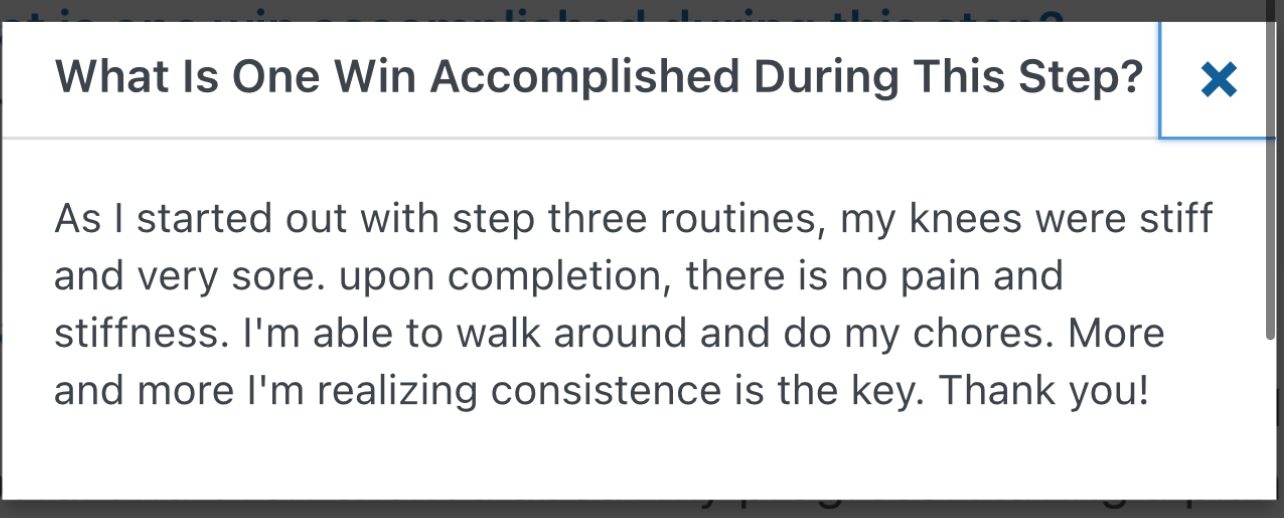
Biggest Takeaway
Relief is possible.
The key is believing that it is possible for YOU.
The more you know about osteoarthritis and the more ways that you can move your body without significantly increasing your pain, the better off you will be.
The only way you unlock your true potential is with taking action.
I highly recommend taking the next step into the FREE 3 Day Walking Workout Challenge where you will learn the best exercises to start building strength, balance and stamina so you can begin unlocking pain relief.
Alyssa Kuhn
Disclaimer: This post is for general informational purposes only. It should not be used to self-diagnose and it is not a substitute for a medical exam, cure, treatment, diagnosis, and prescription or recommendation. It does not create a doctor-patient relationship between Dr. Kuhn and you. You should not make any change in your health regimen or diet before first consulting a physician and obtaining a medical exam, diagnosis, and recommendation. Move Well Age Well, LLC and Dr. Alyssa Kuhn, PT, DPT are not liable or responsible for any advice, course of treatment, diagnosis or any conclusions drawn, services or product you obtain through this video or site.

If you are looking to regain your active life but are unsure where to start, join the revolutionary membership, Adventurers for Life. This is a step-by-step path that not only will help you find pain relief but will help you unlock adventure. You’ll get workouts, tests to pass to make sure you are on the right track, community events and MORE.

